Reimagining What Home Looks Like
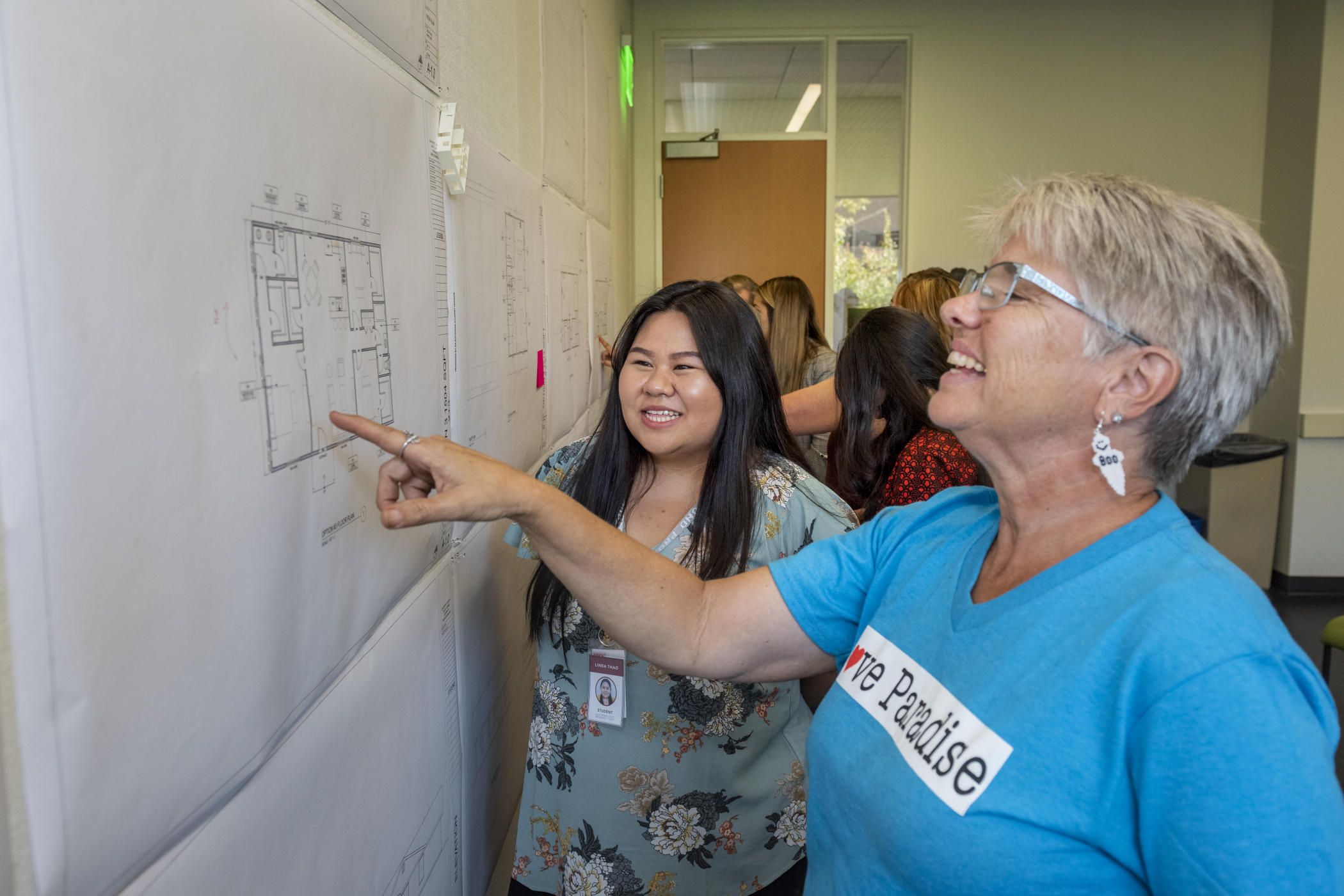
Linda Thao (left) talks with Allison Denofrio (right) about the design details as students in Interior Architecture, under professional guidance partnering with Rebuild Paradise, develop residential floor plans that will be available to the community impacted by the 2018 Camp Fire with the mission is to support the long term rebuilding efforts of Butte County’s disaster affected residents, businesses and workforce. (Jason Halley/University Photographer/CSU, Chico)
Editor’s Note: As we mark the one-year anniversary of the Camp Fire, we are honoring its impact on our community with a series of stories embracing the themes of remembrance, recovery, and resurgence.
It may seem like the basics of modern home design—a mudroom off the garage, a kitchen island overlooking the living room, potential for a wraparound porch to spend time under the trees.
But these small details represent a new chapter for survivors of the Camp Fire as they look at floor plans of their potential future homes. For the last few months, professor and professional architect Rouben Mohiuddin’s interior architecture students have been steadfastly working on a series of designs that will be submitted to the Town of Paradise and Butte County building departments in February as a ready-to-build master plan project. If approved, they allow an individual homeowner or developer to take the plans for free and essentially begin construction without the hassle of taking on design approvals or a lengthy permitting process.
Working with the Rebuild Paradise Foundation and industry professionals including architects, engineers, and contractors, the students are designing with residents’ needs and desires in mind, as well as considerations for site conditions, fire prevention and safety, sustainable building practices, and affordability.
“Students are learning we don’t just sit here and design and draw,” Mohiuddin said. “There is more to design than Architecture with a big A. You can still do design that is well planned that makes a difference in peoples’ lives in a big way.”
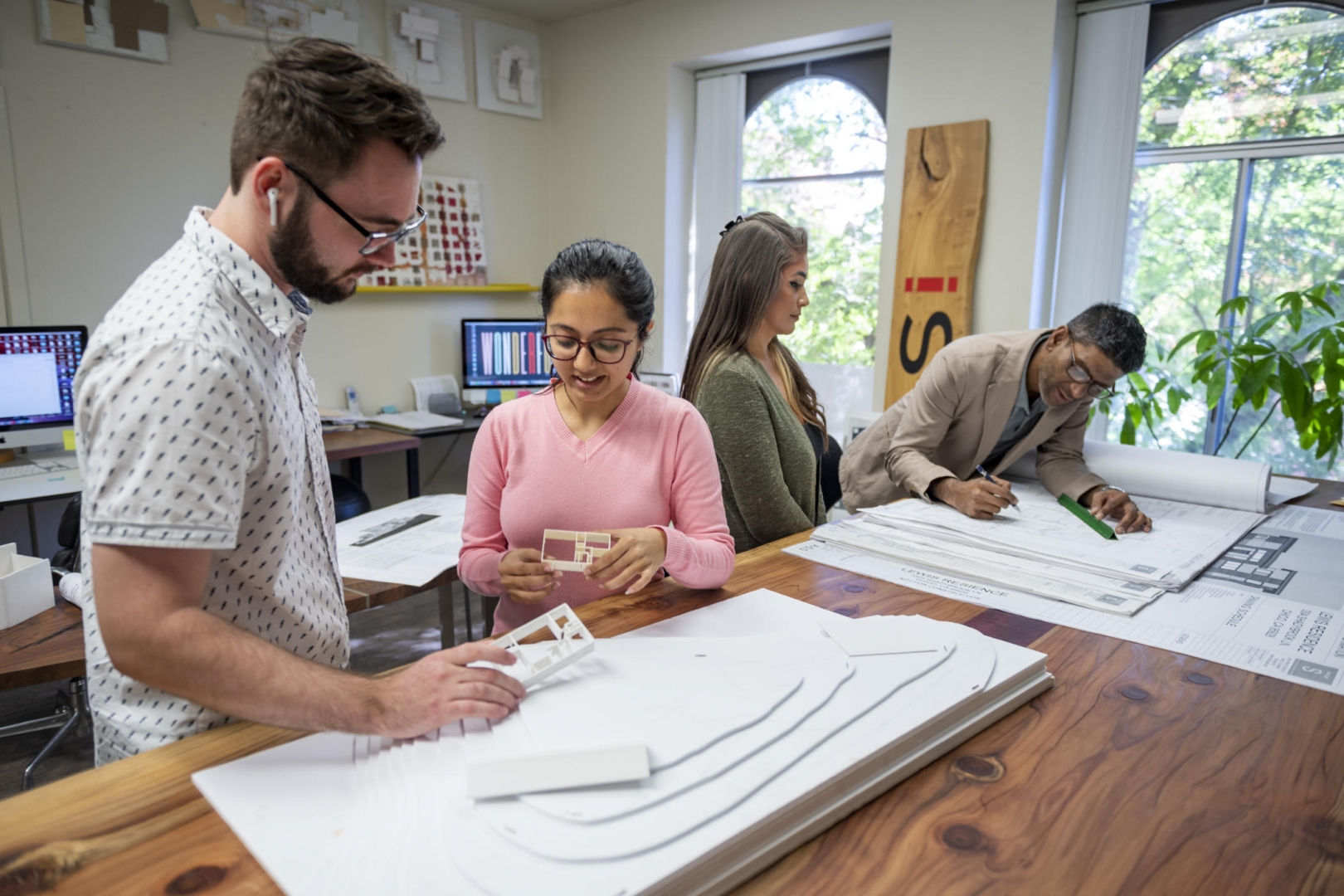
In late October, applause from a dozen survivors greeted the project teams as they prepared to present their concepts and solicit feedback on campus.
Ten students volunteered for the project and committed to treat it as a real job, knowing their designs will affect people’s lives and have lasting consequences for the communities in which they are built.
In turn, they have the chance to apply and develop their design, analytical, project management, and interpersonal and communication skills through a team-based project, and gain experience with design constraints, budgets, reviews, and deadlines.
“It’s very rewarding. We are learning a lot but we are gaining a lot of knowledge in giving back to others using the skills and abilities we have,” said senior Tatiana Perez, who is majoring in art with an option in interior architecture. “Now, instead of saying, ‘I’m really sorry that happened to you,’ I can say, ‘We are going to help you rebuild.’”
The students began the project with a listening session with survivors, asking about their favorite architecture styles and what elements were most important to them in a home.
“The first thing we wanted to do was understand the emotion and the culture. We wanted to see who these people were,” Mohiuddin said.
“Living in Paradise is different than living in Chico,” he added, noting that many live with propane as their natural gas and septic tanks for wastewater. “We wanted to know what the lifestyle was. What made Paradise so special? Why do these people want to rebuild?”
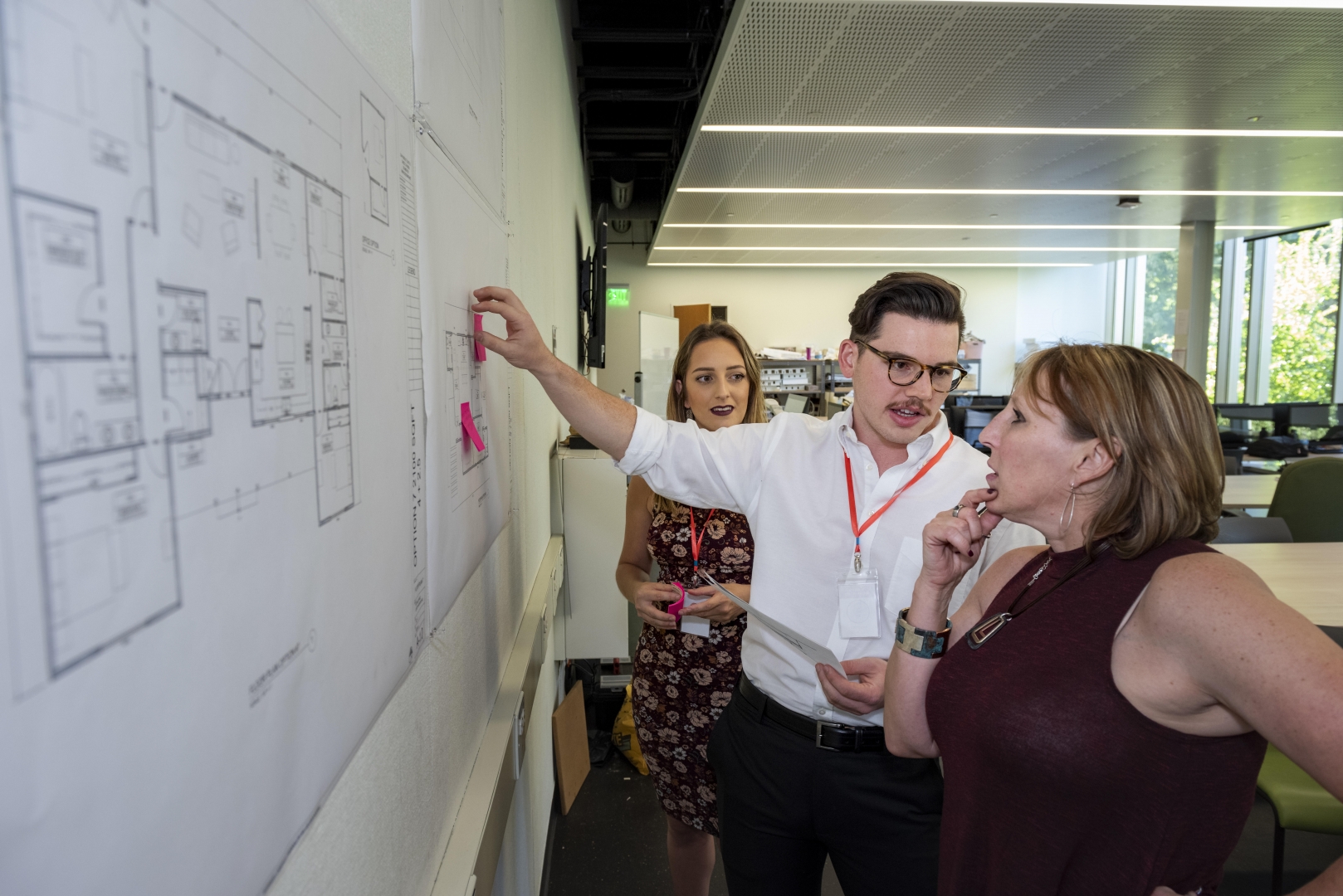
Each week, the students sit at desks in Mohiuddin’s off-campus office in downtown Chico or in the interior architecture classroom in the Arts and Humanities Building. Under his professional guidance, they labor for hours on their designs, making small tweaks and trying new ideas.
This project is the epitome of learning by doing, said senior Joe McMurchie, who is also majoring in art with an option in interior architecture.
“We are not doing it for the fame or glory of it, but just because we can,” he said. “In a situation like this, I just want to be able to do something. That sense of helplessness immediately after the fire affects this project. This is what I’m studying. This is what I want to do professionally. I have the capability and knowledge to make it happen.”
The students’ completed plans include seven wood-frame options, one adobe home, and a house built out of shipping containers. They range from 890 to 2,100 square feet, feature one to four bedrooms, and are styled like either a “mountain Craftsman” or stucco cottage.
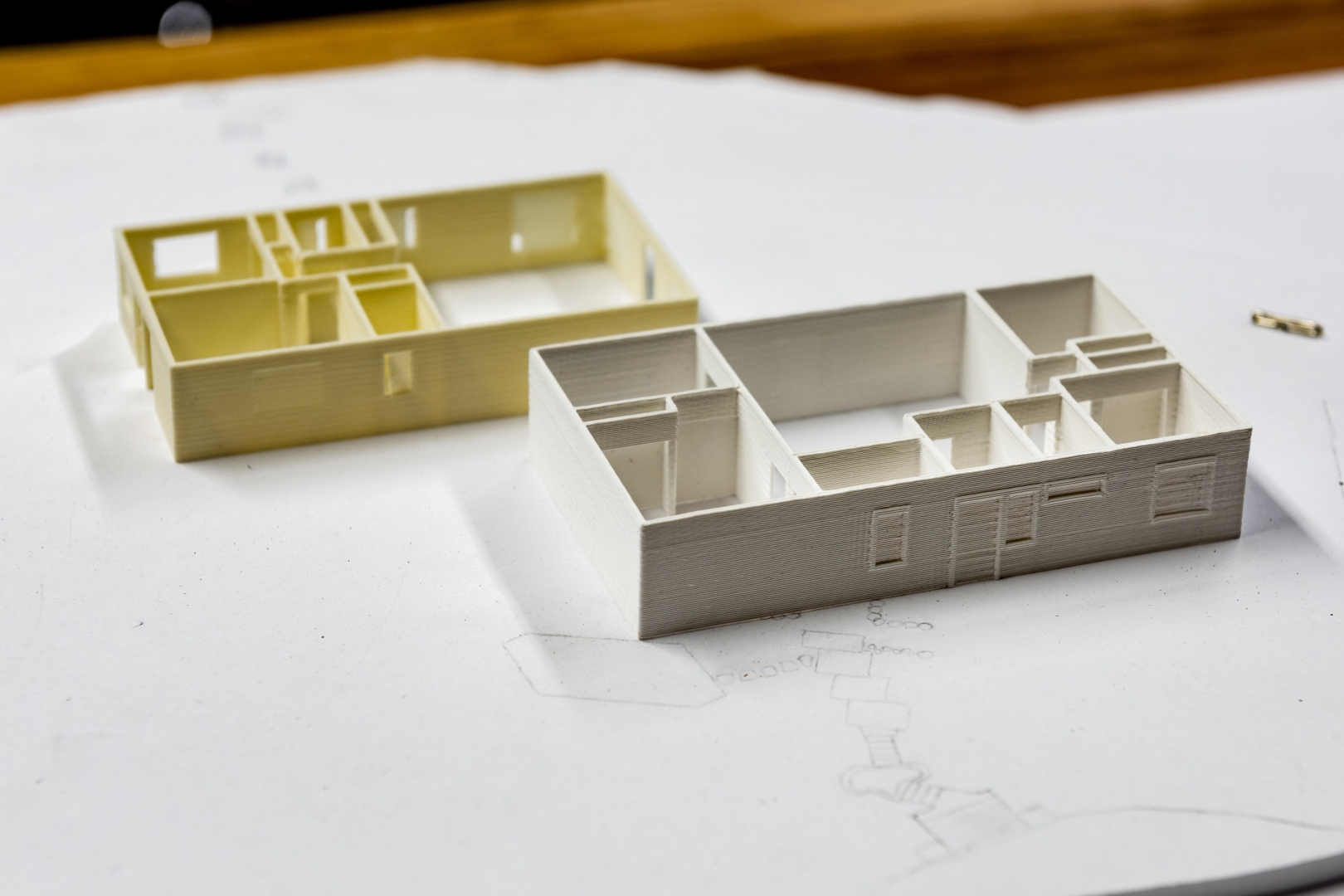
The students are encouraged by reactions from survivors, whose hearts were literally on their sleeves during the October presentation, wearing a “Love Paradise” shirt, carrying a “Paradise, CA” tote, and wearing a cap with the “Welcome to Paradise” sign on it.
One by one, the student groups walked through their designs and pointed out key details. The survivors offered praise and some thoughtful suggestions, such as moving a free-standing counter to a wall to free up space for an island. Maybe the living room slider could be French doors, and perhaps a door could be added from the carport for entry into the house.
It’s heartening, 12 months after the fire, to finally be looking at sketches of what their home could look like and envisioning themselves living inside it, said Paradise resident Mike Denofrio, as he and his wife studied the floorplans.
“With the little bit of feedback, they turned it into this. It’s amazing,” he said.
Drawn to one layout in particular, they chatted at length with its student designers. He could imagine himself watching football on Sundays in the open living room while she dreamed up dishes she could cook in her new kitchen—life as they once knew it and hope to have again.
“The school has really stepped up and are putting a giant effort into recovery,” said Denofrio, who also works as a painter for the University’s Facilities Management and Services. “Being able to work with the students is even more special.”
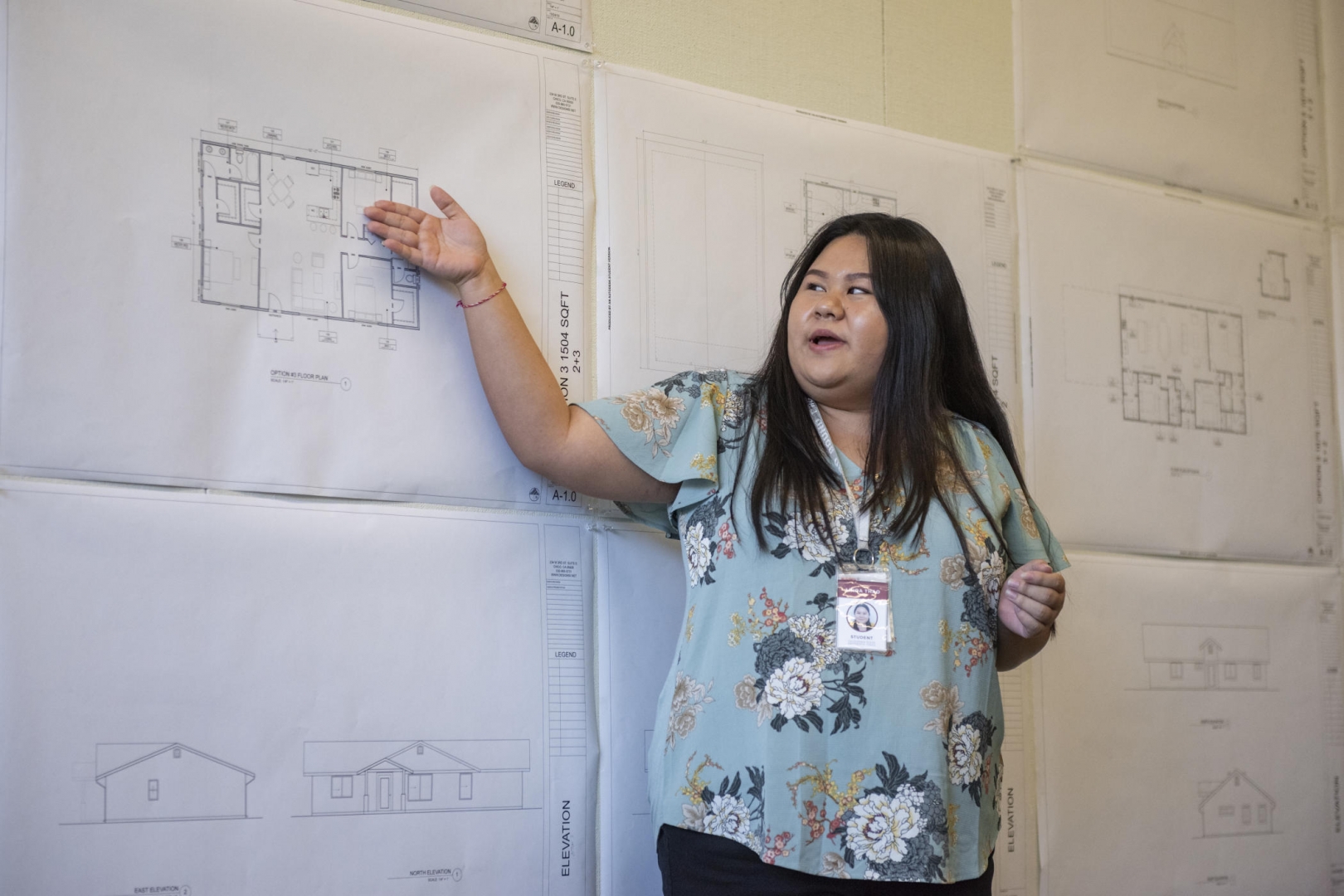
Such community partnership has been part of Mohiuddin’s philosophy since he was a master’s student at the Southern California Institute of Architecture, where he helped design children’s playgrounds in the wake of the 1992 Los Angeles Riots. As he moved into academia, he carried the concept into his classrooms, and his students have subsequently worked on projects ranging from hospital spaces to an orphanage complex in Bangladesh.
During the Camp Fire, he knew immediately he wanted to help. After consulting with local builders and Senator Jim Nielsen’s office, he eventually connected with Charles Brooks (Business Administration, ’03), the executive director of the Rebuild Paradise Foundation, who was eager to partner with his alma mater.
Brooks started the foundation three weeks after the Camp Fire. Working with Rebuild North Bay, which is leading a post-fire recovery effort in Sonoma and Napa Counties, the nonprofit is developing long-term recovery resources that can incentivize, attract, and retain residents and businesses.
“We want to make sure we are not just giving people stuff—how could we lower mental and cost barriers to get people back into their houses,” he said. “What can we do now that will be significant 5, 10, 15 years down the line?”
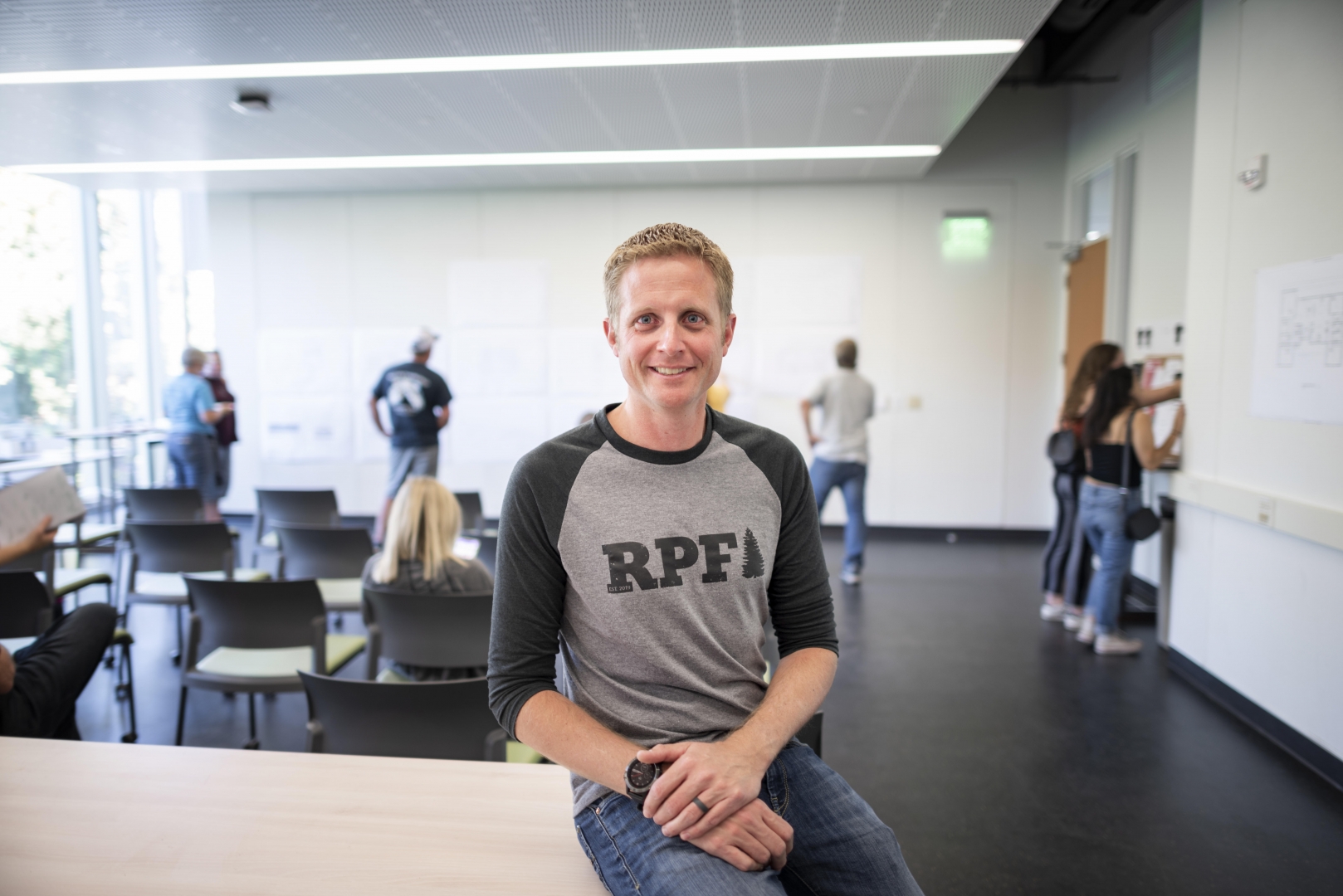
Rebuilding residences must come first, and businesses will follow, said Brooks. But that’s no easy task—even for those who want to rebuild.
Among the population in the burn scar area, some people were well insured and others were incredibly underinsured or not insured at all. But about 40 percent, Brooks said, represent a group of hard-working, moderate-income individuals whose rebuilds would drastically benefit from some support.
Partnering with the students on a project like this to support that “missing middle” not only saves the owners half the cost of permitting, but it relieves some of the mental burden of a daunting rebuild.
“It’s a mental lift,” Brooks said. “Most people in disasters never plan to build a home from scratch.”
He certainly never did. After losing his own home in the Camp Fire, it was an easy choice to put all his energy into returning the vitality and community of the town he called home for 15 years.
“This is giving people hope,” he said, as he watched the students present their designs. “When I’m in a room that is confident about rebuilding, I’m excited about rebuilding. And to see the giving spirit—that they just want to help, and we can facilitate that—it’s unbelievable.”


